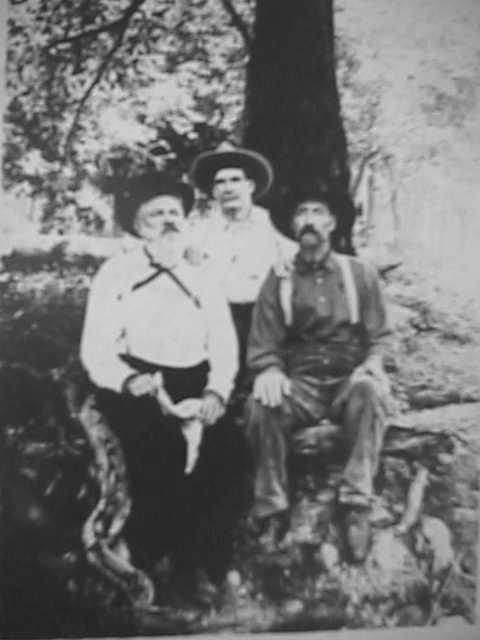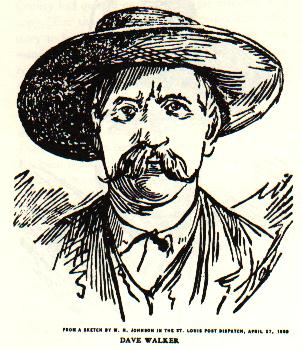|
|
|
|
|
 |
 |
|
This page is a compilation of information about the Infamous vigilante organization know as the "Bald Knobbers". Whether a Bald Knobber, Anti-Bald Knobber, Republican, Democrat, Union, or Confederate, it is a period in Ozark history that must be remembered. From the first hangings of Frank and Tubal Taylor. To the gruesome hangings of John Mathews, Bull Creek Dave, and William (Billy) Walker. With the final conclusion of the lynching of John Wesley Bright. The Bald Knobbers, created hope, freedom, despair, and uncertainty among the people of the Ozarks. How it started: Prior to statehood, migrating families crossed the Mississippi River to settle in the western territories. When Missouri entered the Union as a Slave state in 1821, slave-owning southerners begin immigrating, causing the first hostilities. Law and order was often days away from the settlements of these early pioneers. Many fights occurred from disagreement over land rights and morality. The Code of the hills was the excepted method to deal with conflicts, disagreements, and outright disregard for law, it was based on moral and biblical beliefs. These beliefs were enforced with methods of the times, which accounted for the only real law and order. The next split began when Taney County was formed in 1837 with Forsythe as the County Seat. For the first elections of County Officials, the different factions supported candidates of their moral persuasion. At the outbreak of the Civil War, most persons tried to stay neutral, but the events of the times were rooted to deeply and eventually brothers were fighting brothers. Many people left the Ozarks; some went south, some north, but most stayed. Because of the terrain, and being a border county between a Federally enforced free state and a slave state developed a natural haven for criminals of every walk. They took advantage of the young, old, weak, and unprotected citizens, mainly because the men were away fighting a war. The older men who had remained formed a Local Home Guard. A state militia was also formed but ended up being a part of the problem. Northern and Southern Armies took what ever they needed to supply their forces. Recruiting was a life and death question, choose the correct side or die. The remaining families because so distraught they were forced to beg for food and clothing to survive. To add insult to injury, another group called bushwhackers landed upon the border counties. Loyal to neither North nor South, the bushwhackers raided farms, murdered, raped, and pillaged anything they could find. At the end of the War, the veterans came home to destroyed farms and missing families. Southern veterans had lost their farms to back taxes under the Federal Homestead Act of 1862. They were not allowed to vote because of the Missouri Loyalty Test in the Drake Constitution. Prior to the Civil War Taney County had only three murders, but from 1865 to 1885 between thirty and forty murders occurred. Failing economy and high taxes was hard on the landowners. Crime went on a rampage and few violators stood trial. Only Federal law officers could pursue criminals across state lines and the few that were tried, were acquitted by corrupt courts. It was after one of these acquittals that thirteen men met in secret and formed a Citizens committee to fight the lawlessness and to elect officials that would enforce law. The original thirteen were Nat Kinney, James A. DeLong, Alonzo S. Prather, Yell Everett, James B. Rice, T.W. Phillips, James R VanZandt, Pat F. Fickle, Galba E. Branson, J. J. Brown, Charles H. Groom, James K. Polk McHaffie, and possibly Ben Price. From this meeting came the group know as the Bald Knobbers. As an outsider it is easy for me to see both sides. Both Northern and Southerners primary duty was the safety of their families. To support a corrupt legal system or Vigilantes, neither accomplished that goal. The fears, hurts, and frustrations from pre Civil War to post Civil War had proved to be so deep, that these factions tried to destroy each other in the name of peace and security. |
 |

|
 |
 |
|
|
|
Bald Knobber Publications: Bald Knobbers, by Lucille Morris Upton, 1939 (photo) Out of print, sometimes available from Ozark Books. The Bald Knobbers, The Story of the Lawless Night-Riders who Ruled Southern Missouri in the 80's, by Harvey N. Castleman (Vance Randolph), 1944. (photo) Out of print, on file at Pittsburg State University, Pittsburg, Kansas. pg 1, pg 2&3, pg 4&5, pg 6&7, pg 8&9, pg 10&11, pg 12&13, pg 14&15, pg 16&17, pg 18&19, pg 20&21, pg 22&23, pg 24&25, pg 26&27, Bald Knobbers, Vigilantes of the Ozarks Frontier, by Elmo Ingenthron & Mary Hartman, 1986. (photo) Available from Amazon Books Christian County Jail Records 1887 - 1894 Bald Knobber Jail, by Roger D. Fortner. (photo) Available from Ozark Books.
|
|
|